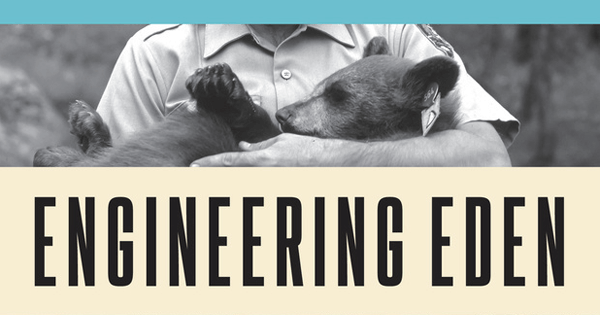Engineering Eden
Read an excerpt from Jordan Fisher Smith’s new book about the trial that changed our national parks

It’s a familiar story, replayed from Fairbanks, Alaska, to the Grand Canyon: young man leaves small town, ventures into the open wild, and dies at the hands of nature. But in the summer of 1972, when Harry Walker was mauled to death by a grizzly bear in Yellowstone National Park, few Americans could have anticipated the sweeping consequences the ensuing wrongful death trial would have for our national parks. It wasn’t just a legal battle between Walker’s family and the federal government, but also a rancorous argument between biologists over the management and restoration of wild places.
Jordan Fisher Smith’s new book, Engineering Eden, depicts the fight over controlling nature—and over the destiny of our public lands—that continues to this day. Here, Smith describes the ramifications for just one of the factors that biologists must take into account—the unruly migration of elk.
Of the 424 animals and birds placed in the care of the Yellowstone rangers by the act of 1872, few would be as much trouble as bears and elk. But it was elk, in particular, that triggered an argument that lasted for decades over how nature worked, and how much engineering was appropriate to repair it once human beings had damaged it. Behind this was another question: Does nature have a centripetal tendency to go back to what it once was on its own, once it has been disrupted? These questions, triggered by the management of elk, formed the background of the argument about grizzlies that wound up in federal court as Martin v. United States in 1975.
Elk don’t hibernate as bears do, and for elk, the period of the year when the metabolic demands of staying warm, wading through deep snow, and foraging for food are at their greatest is the time when the plants that make up the elk’s diet are dormant or buried under snow.
Winter is the grim reaper of grazing and browsing animals in the Rocky Mountains, and the higher up the mountains you go, the more severe the conditions are. So in the autumn elk move downhill to brushy south-facing slopes and to valley bottoms. In the spring, they “follow the green wave”—as wildlife scientists put it—of new plant growth back up into their summer range. “Their biennial migrations are as regular and systematic as those of migratory birds,” observed an Army engineer working at Yellowstone, in 1915.
The Continental Divide runs generally north-south in the Rocky Mountains, but in Yellowstone it takes a jog to the west, running sideways across the park. Rain falling south of the Madison Plateau will run toward the Snake River, and north of it, down the Yellowstone. Each autumn, early observers saw scattered bands of elk in the high pastures gather into two principal herds, descending the main drainages on either side of the Continental Divide. The southern elk followed the Snake River to Jackson Hole and beyond, while the northern herd made its way into the Yellowstone Valley; in the early days, more than eighty miles north of the park, toward what is now the town of Big Timber, Montana.
Yellowstone was not created as a wildlife refuge; it was a tourist attraction that began functioning like one. As set forth in the act of 1872, within its boundaries were geothermal curiosities and scenery like the Grand Canyon of the Yellowstone, but not elk winter range in the lower Yellowstone, the Snake, and the Madison rivers. Yellowstone was a big rectangle, and the lives of elk didn’t manifest in right angles.
Reprinted from Engineering Eden: The True Story of a Violent Death, a Trial, and the Fight over Controlling Nature. Copyright © 2016 by Jordan Fisher Smith. Published by the Crown Publishing Group, a division of Penguin Random House, LLC.

